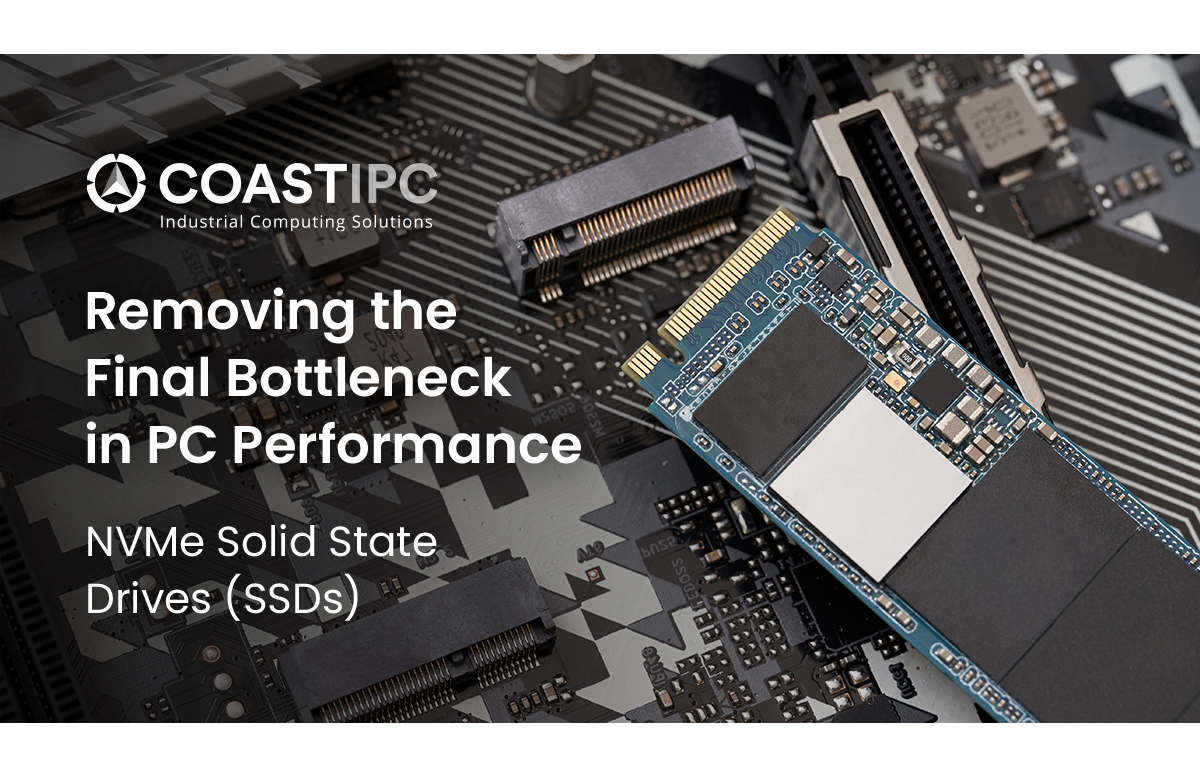
Computer component performance rapidly evolves, with faster central and graphical processing units (CPUs and GPUs), faster and larger system memory (RAM), more robust system bus technology, and enhanced input and output interfaces. All these things have resulted in computers that are faster and more capable than ever. While storage technology has also advanced, its progress has not been quite as revolutionary, and the read/write performance of storage media is one of the last remaining bottlenecks in PC performance. Until now.
Evolution of Storage Performance
Storage technology and performance have evolved considerably over the last few decades. Traditional serial advanced technology attachment (SATA) hard disk drives (HDDs) with their spinning platters have enjoyed a long history and continue to be used today. They are well suited to applications that require large amounts of cost-effective storage and less frequent read/write access. They provide sustained data throughputs of up to 200 MBps, with access times in the 2–3 millisecond range.
SATA solid state drives (SSDs) have been a mainstream option for several years now, providing users with much faster throughput (up to 500 MBps) and faster access performance (0.2 milliseconds). Without the mechanical aspect of storage devices, these drives are more robust, smaller, and more power-efficient than earlier options. They are ideally suited for PCs, laptops, and servers that need faster startup times or faster overall system performance.
NAND-Based Non-Volatile Memory Express (NVMe)
NVMe is a protocol developed by a consortium of technology companies, including Intel, SanDisk, Samsung, and Seagate, to facilitate faster movement of data in and out of storage. With the continued rapid advancement of PC performance, eliminating the constriction that device storage creates becomes the key to unlocking held-back performance capability.
While PCIe-based storage isn’t new, peak performance has been gated by the limitations of older protocols such as SATA and the Small Computer System Interface (SCSI). NVMe eliminates those legacy constraints and enables more efficient utilization of up to four lanes of the PCIe bus, providing sustained data rates of up to 3 GBps and access times of 0.02 milliseconds. The result is game-changing performance—you’ll never have to “wait for your computer” again.
Benefits to Industrial Computing
New and emerging technologies in areas such as gaming, video editing, and augmented reality systems are primarily responsible for driving increases in technology and performance. Several application areas in the industrial computing industry also stand to benefit from these advances. These include:
Machine Learning/Deep Learning: The training of ML/DL models is very resource-intensive and capable of taxing most computers. Although GPUs and CPUs do most of the heavy lifting, reading and writing files and data to disk is a significant function. NVMe performance characteristics facilitate moving data from storage to system memory and vice versa quickly, minimizing the amount of time that vital processing resources spend in a waiting state.
High-Volume/High-Resolution Image Storage: Automated inspection, specialized security/surveillance, and other applications often generate large quantities of high-resolution images and video. In many cases, this data is stored for a period (or indefinitely) in the event that its retrieval is required in the future. As acquisition rates and resolutions increase, so does the amount of data being transmitted. When a system cannot move the data fast enough, it flows into temporary memory buffers. If those buffers fill, data is lost. The faster transfer speeds make NVMe-based storage an excellent choice for digital video recorders (DVRs) and other systems where large, sustained amounts of data need to be transferred and stored.
Edge Computing: More and more computing capability is being moved to the edge — essentially placing the computer as close to the application as possible to facilitate partial processing, decision making, and other tasks that would traditionally be done by a central unit or system. Industrial PCs and other edge devices are — by their nature — small in physical size. They rely on lightweight and power-efficient components to provide maximum computing ability in a small package. The power efficiency and M.2 compatibility of NVMe make it an excellent choice for delivering increased capability without increased size.
Making the Switch
There are many advantages and benefits to adopting NVMe SSDs for high-performance computing needs. However, not all NVMe drives offer game-changing performance benefits. Expected performance is largely manufacturer-specific, based on the manufacturer’s particular drive design. Devices that support x4 PCIe will be faster than those that support x2 PCIe.
The type of memory matters too: single-level cell (SLC) is faster than multi-level cell, triple-level cell (TLC), or quad-level cell (QLC). If you are looking to upgrade an existing system, the ability of your BIOS to boot from the NVMe SSD will be crucial to getting maximum benefit from the upgrade. It’s worth noting that not every industrial computer supports the switch to NVMe SSDs. For example, many industrial computers offer M.2 expansion slots that support SATA III but do not support NVMe. All of this is to say, there are a lot of variables that should be considered before you make the change.
Fortunately, there are professionals available who can assess your application and provide a solution that meets your unique needs, requirements, and budget. CoastIPC has a team of experts ready to work with you to ensure that you have the right equipment to do the job.
For more information about NVMe or for help selecting the right storage option for your industrial computer application, please contact our product experts at [email protected] or 866-412-6278.
